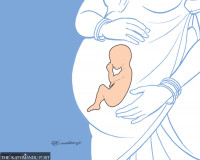Health
First phase of vaccination for 5–11-year-olds begins
Around 2.2 million children from 27 districts will be inoculated in the first phase.
Arjun Poudel
First phase of the immunisation campaign against Covid-19, designed for children between five and 11 years, started in 27 districts on Thursday.
Around 2.2 million children of the said age group will be inoculated in the week-long campaign, which will be continued until June 29, officials said.
“Immunisation has been started in all wards of respective local units in Kathmandu,” said Basanta Adhikari, chief of Health Office Kathmandu. “Vaccines are being administered from schools.”
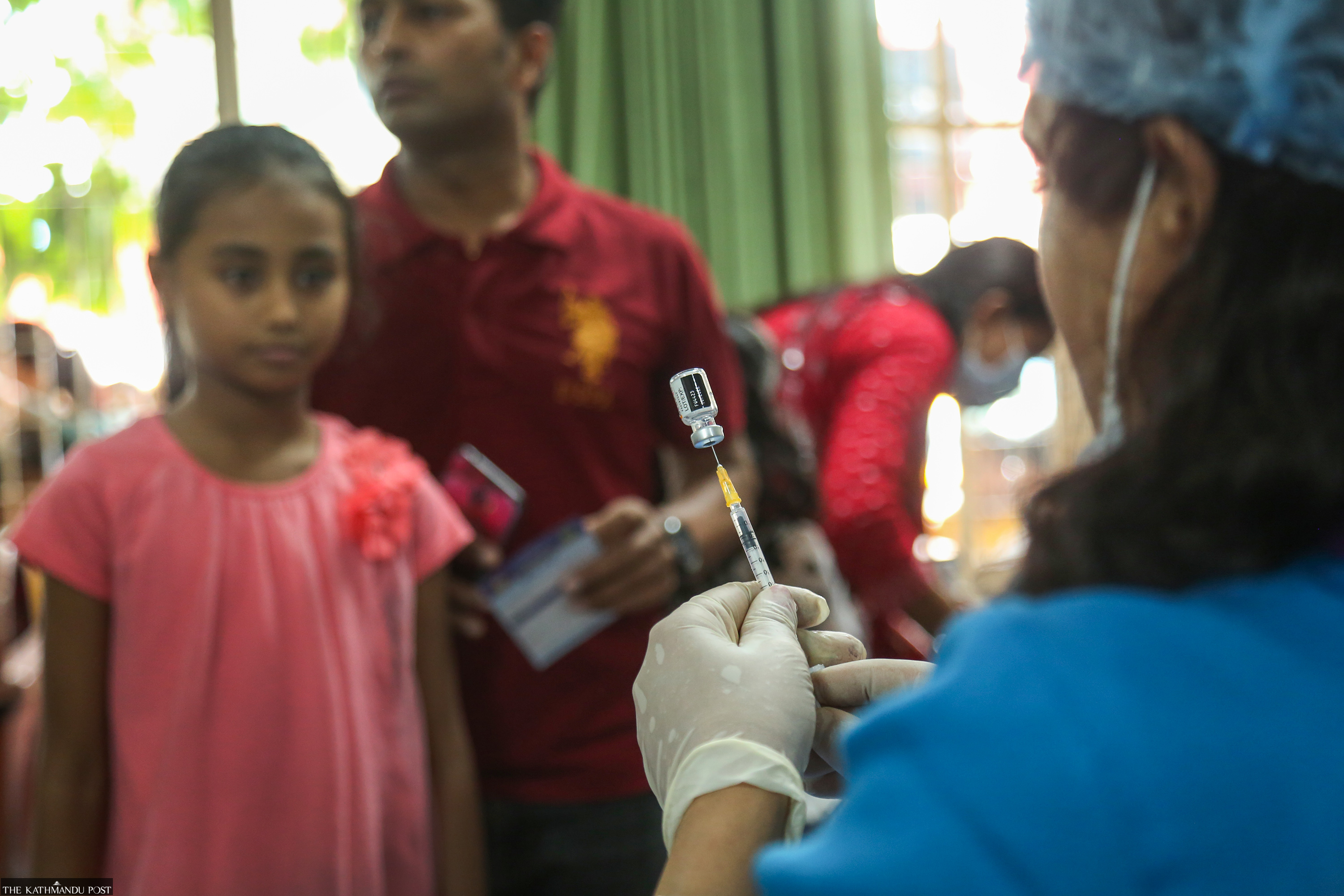
In the first phase of the immunisation drive, children of the said age group in Jhapa, Ilam, Morang, Sunsari, Saptari, Dhanusha, Parsa, Siraha, Mahottari, Kathmandu, Lalitpur, Bhaktapur, Chitwan, Kavrepalanchok, Sindhuli, Makwanpur, Kaski, Nawalparasi West and Nawalparasi East will be inoculated.
Other districts in which vaccination drives have been planned in the first phase are Rupandehi, Banke, Dang, Bardiya, Surkhet, Kailali, Kanchanpur and Dadeldhura, according to Health Ministry officials.
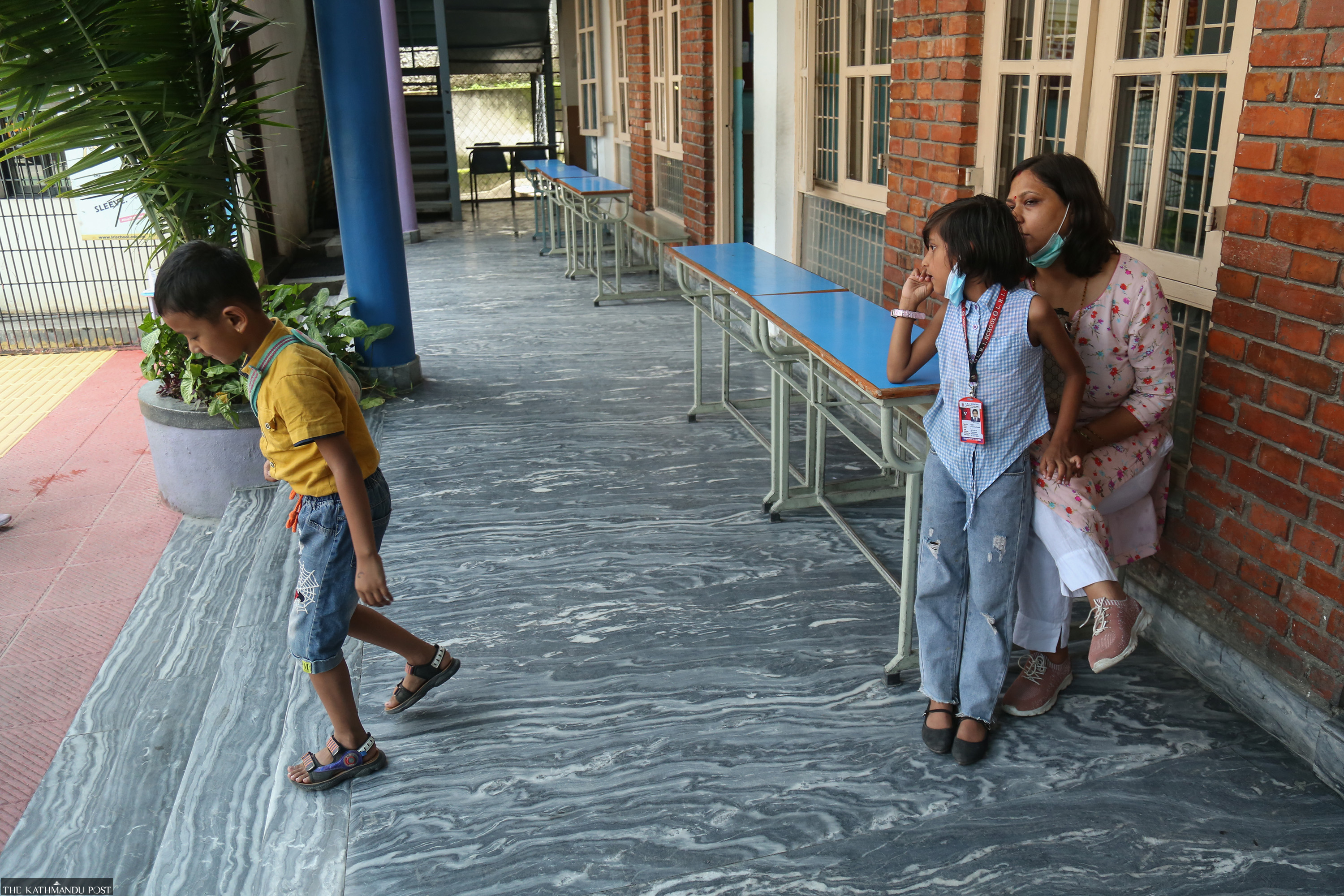
Officials said that even if the vaccination campaign is scheduled from June 23 to 29, local health facilities can extend the programme as per their needs.
Earlier on Wednesday, the Ministry of Health and Population said that all necessary preparation regarding the drive has been completed.
“We have completed all necessary preparation for the drive,” said Sagar Dahal, chief of the National Immunisation Programme. “We will like to request all parents in the respective districts to allow vaccine administration to their children.”
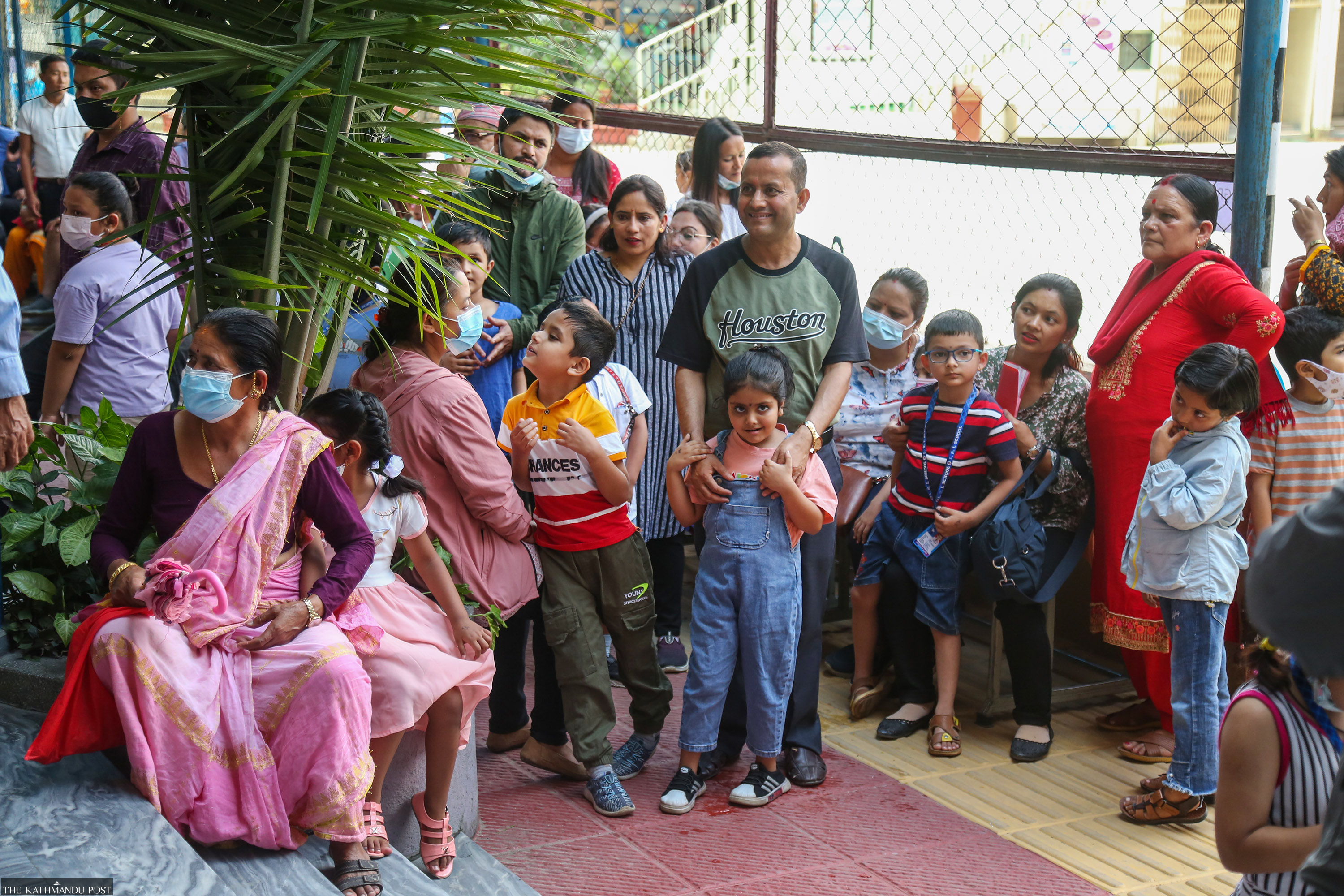
The ministry said that parents of all eligible children can have the vaccine administered to their children from any nearby school even if their ward is not a student of that particular school.
Officials said that parents can visit their local unit offices if they are unaware of the location of immunisation centres near them.
Nepal received 2,203,200 million Pfizer doses of Covid-19 vaccine from the COVAX facility on Sunday.

The vaccine doses are part of the 8.4 million doses committed by the facility, which is the United Nations-backed international vaccine sharing scheme. The United States government bore the cost of the vaccine doses and the USAID facilitated the process, officials said.
There are two types of Pfizer-BioNTech Covid vaccines for children—one is for those between five and 11 years, and another for those aged 12 and above. Nepal has already used Pfizer vaccines on those with comorbidities and on children between 12 and 17 years.
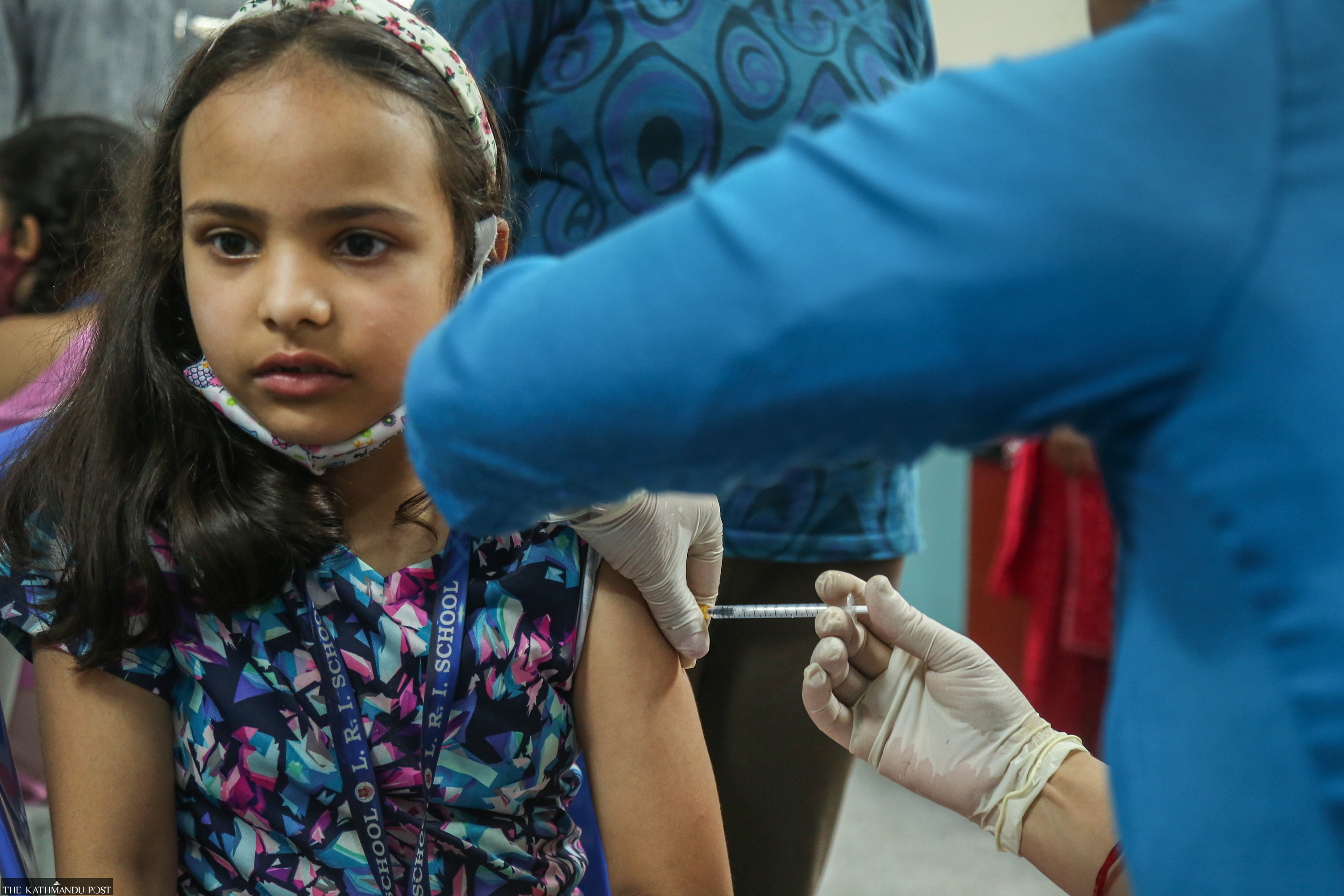
The Pfizer-BioNTech vaccine is the only jab recommended by the World Health Organization for use in children between five and 11 years old.
The American Association of Paediatrics has recommended administering 10 microgram doses in a gap of 21 days to children between five and 11 years. The dose, 0.2ml, is one-third of what is administered to adolescents and adults.
The vaccine vial for 5–11 year-olds comes with an orange cap while the other vial is purple-capped.
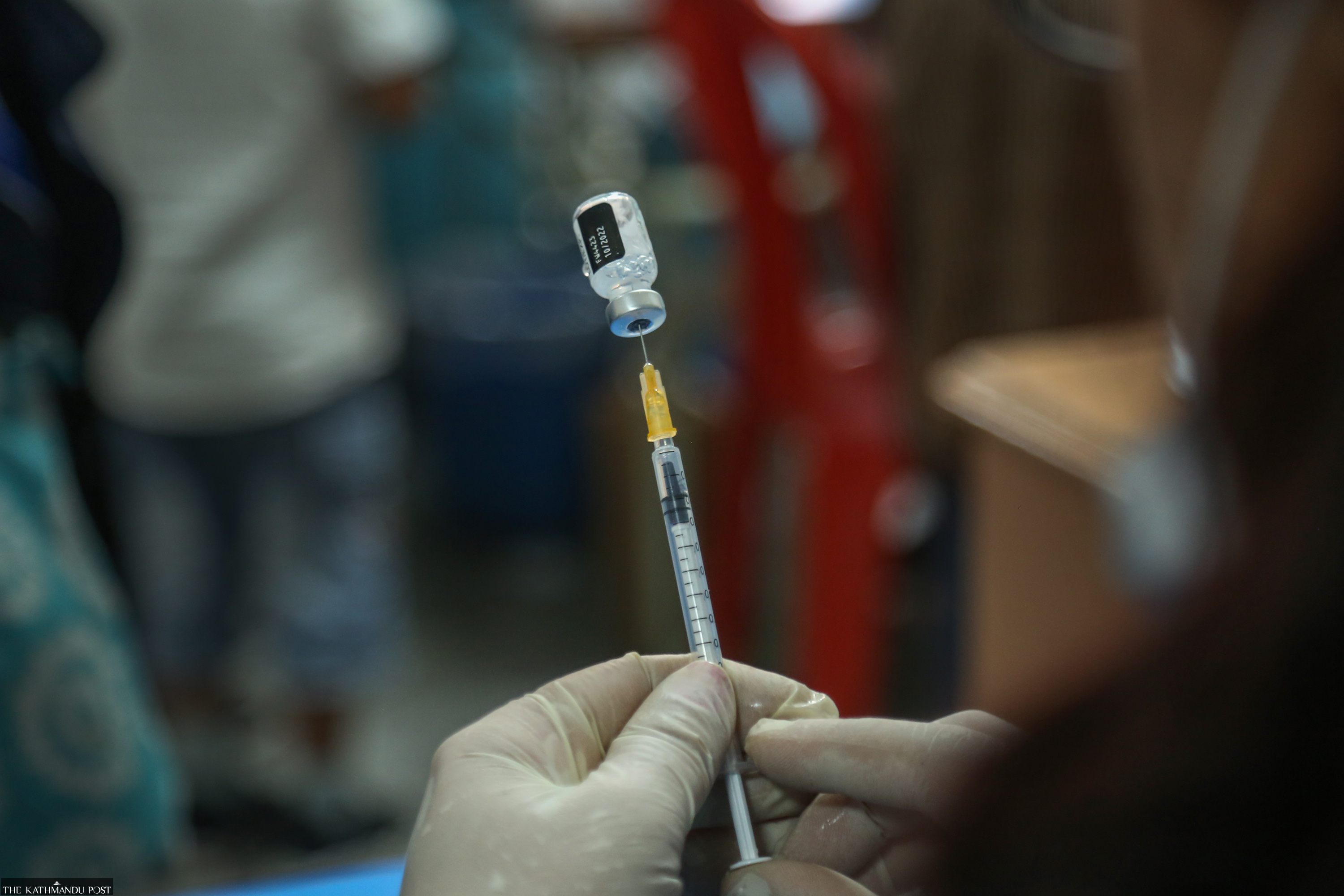
Each vial with 10 doses needs 1.3 millilitres (ml) of diluent under Pfizer’s preliminary plan.
The US Food and Drug Administration in October authorised emergency use of the Pfizer-BioNTech Covid vaccine in children between five and 11 years. Several countries have already started administering the vaccine to children.
Although the Pfizer doses for adults can be kept in normal temperatures (2 to 8 degrees Celsius) for up to 31 days, paediatric doses can be stored in normal temperatures for up to 10 weeks, officials said.
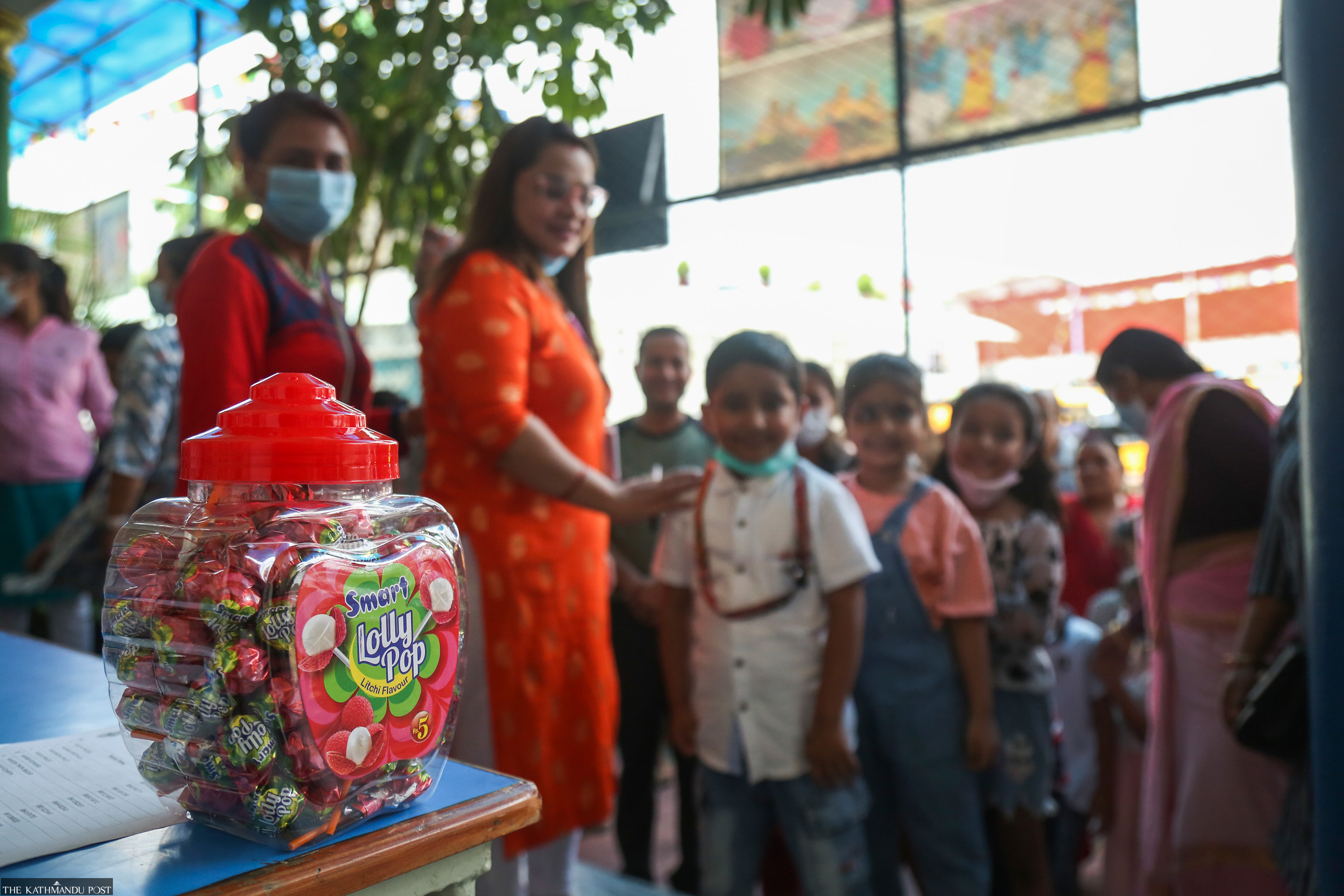
Vaccine doses were supplied to provinces and districts upon the arrival of the doses.
The second dose of the vaccine will be administered from July 18 to 24 in 27 districts.
The Health Ministry said that the second phase of the campaign will be launched from August 21 to 27 in the remaining 50 districts.
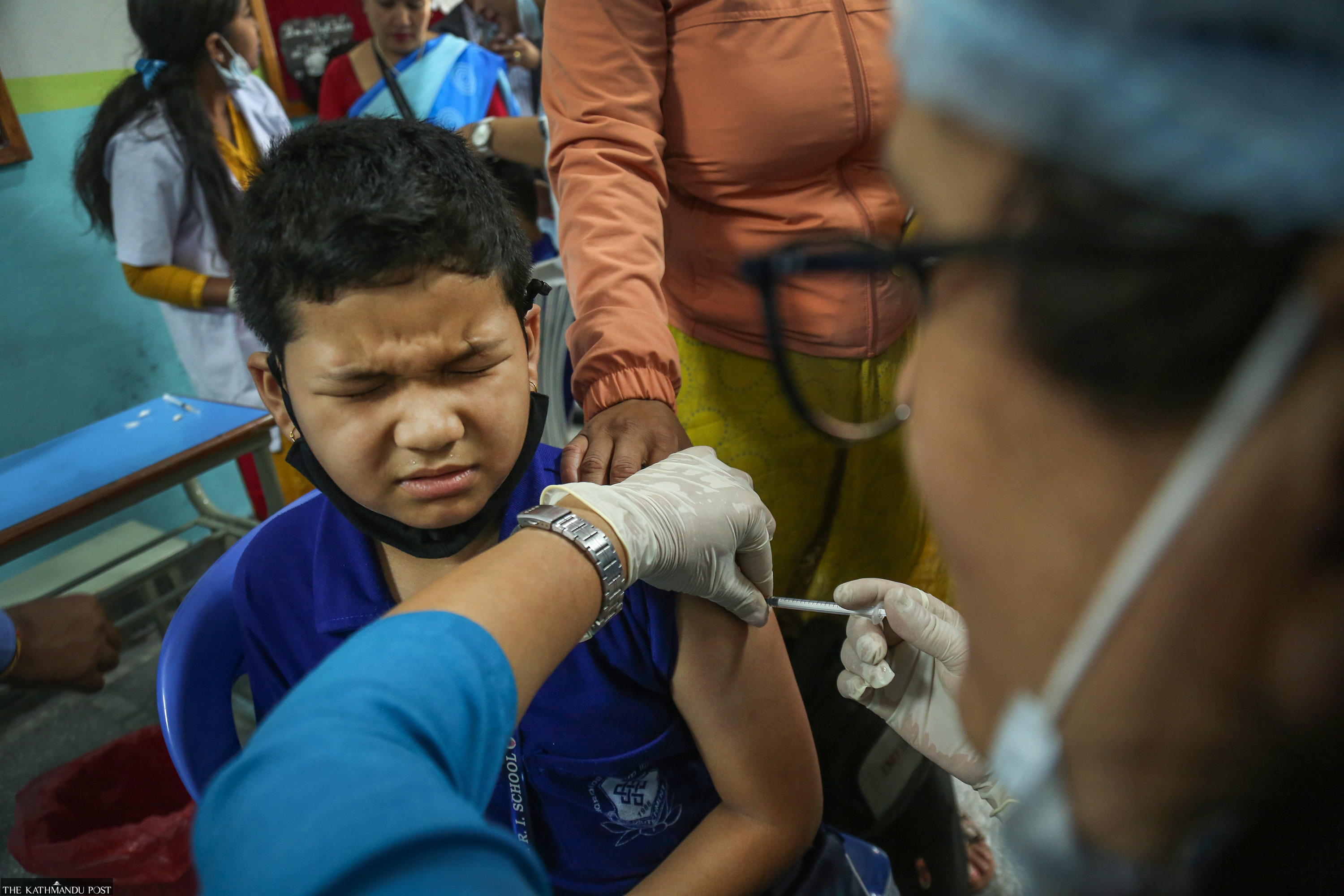
Earlier on Sunday, the Health Ministry held discussions with representatives of the Nepal Paediatric Society, an organisation of paediatricians, about the planned vaccination.
“We told them about the importance of vaccination, its risks and benefits,” said Dr Bibek Kumar Lal, director at the Family Welfare Division, under the Department of Health Service. “As the risk of Covid-19 infection is still very high and children are also exposed to infection, the benefits of vaccination are far greater than its risks.”

Officials said each ward will have at least one vaccination centre and the concerned local agency will decide if more vaccination centres are needed.
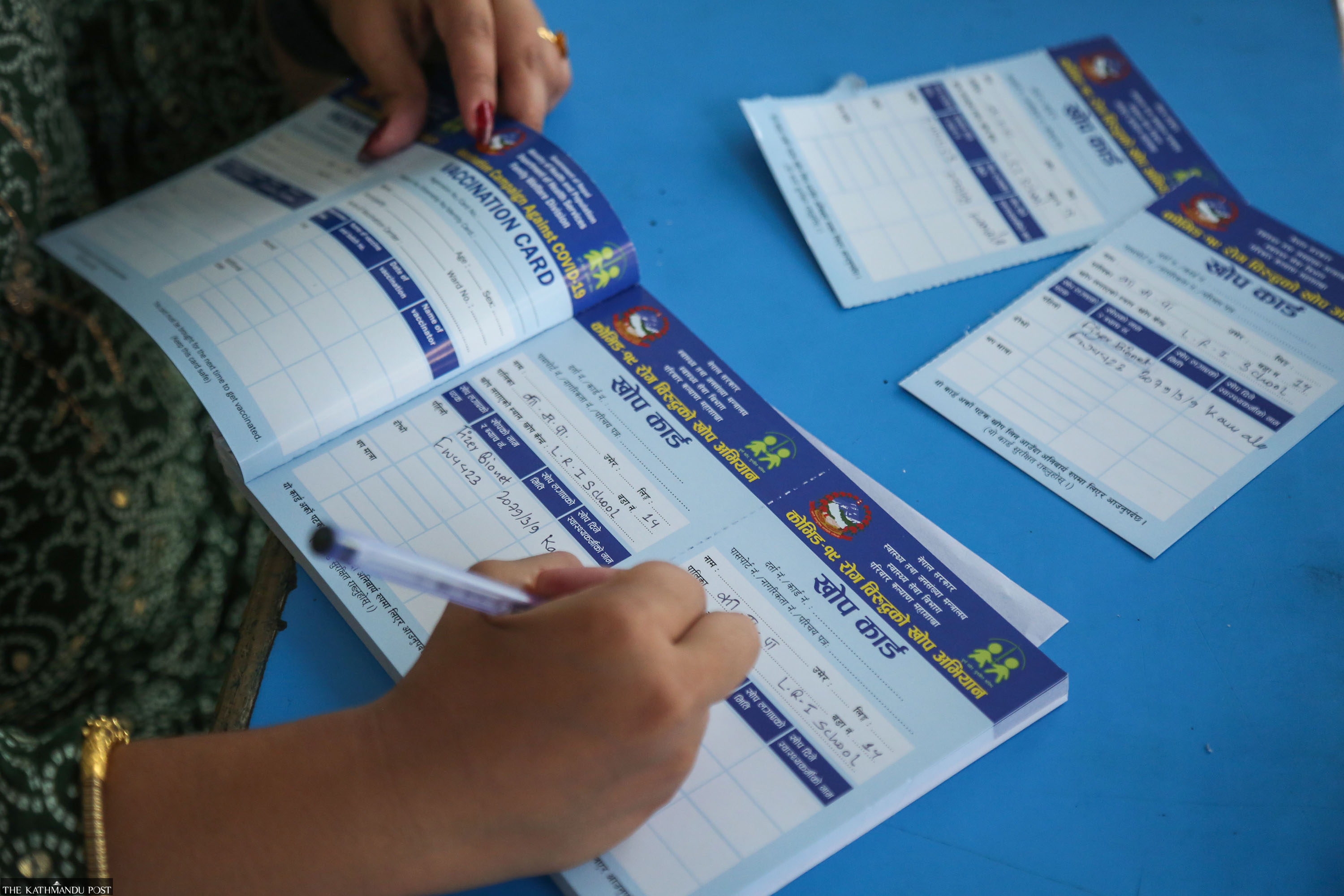
Schools of respective districts have been asked to prepare the lists of the children eligible for vaccination. Officials said that if parents declare that their children are eligible for vaccination, health workers will not seek further proof.

Nepal has so far received 55,584,770 doses of Covid vaccines of various brands—AstraZeneca, Vero Cell, Moderna, Janssen, Sinovac-CoronaVac, and Pfizer-BioNTech—including paediatric doses.
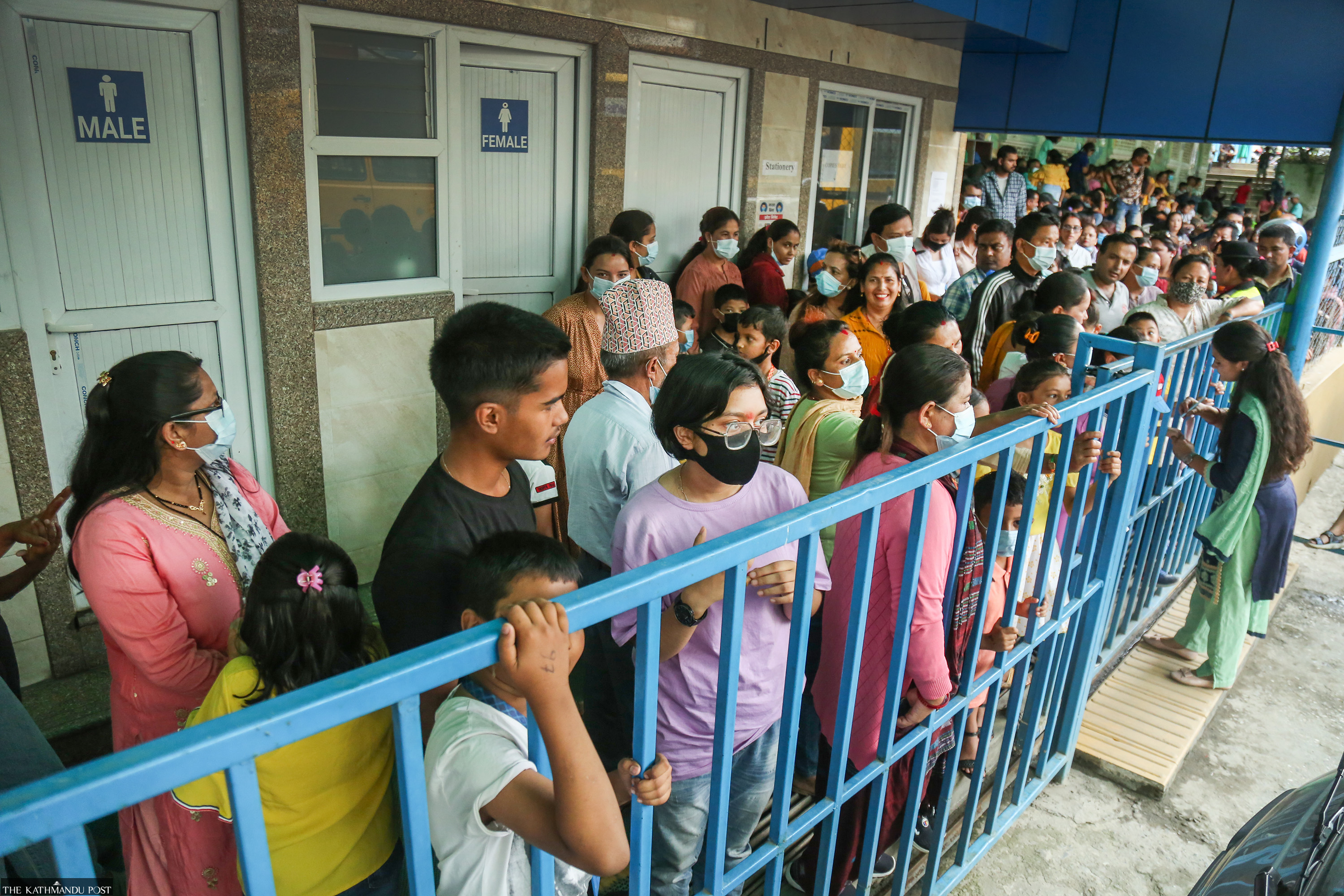
As many as 20,187,733 people or 69.2 percent of the total population have been fully immunised so far.
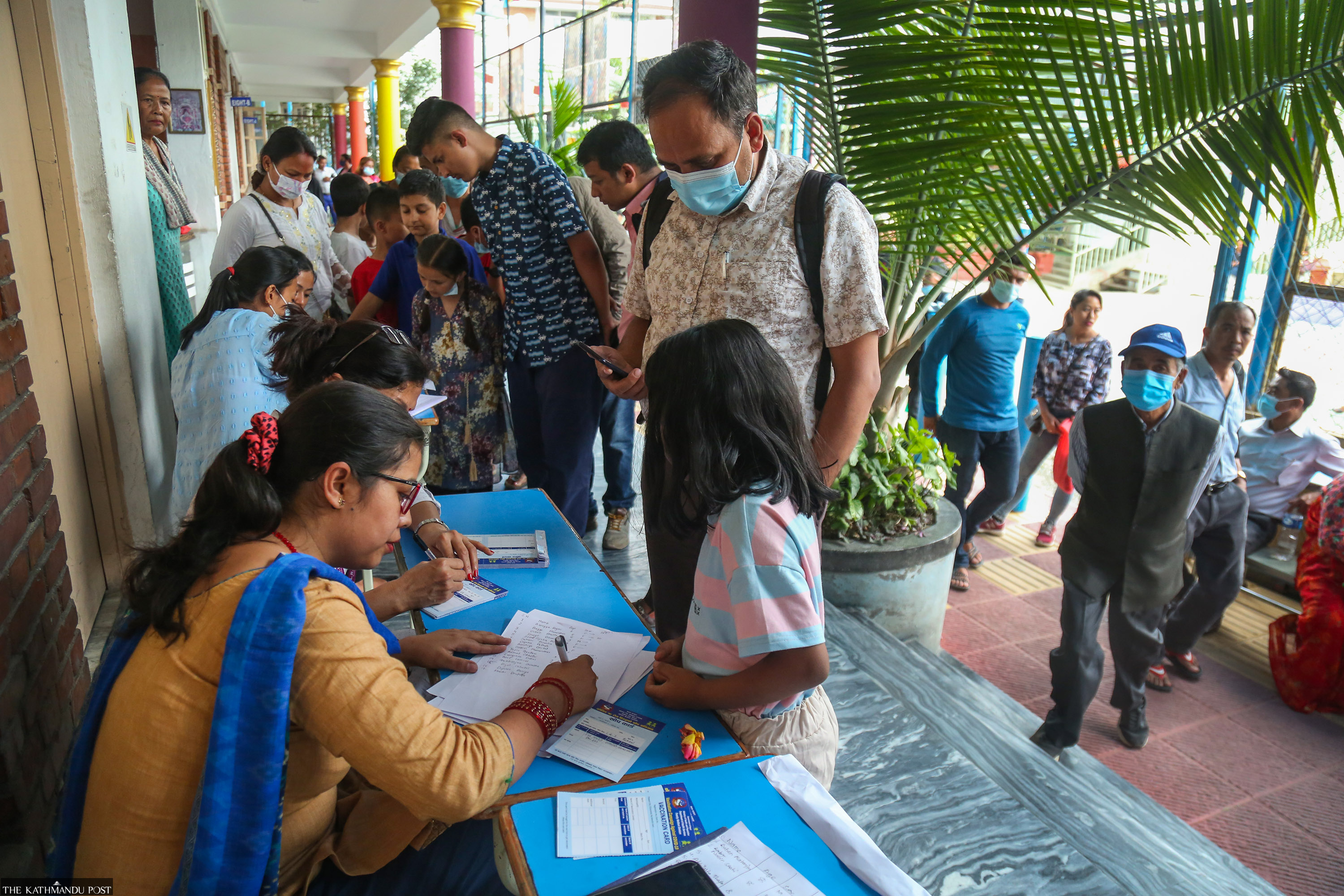




 9.12°C Kathmandu
9.12°C Kathmandu
